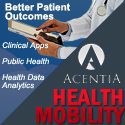
WashingtonExec reached out to executives in the community for their insights on issues concerning the mobility industry. Can mobility remain cost effective while being efficient, and how does it reduce cost for clients?
Our fourth participant is Greg Eoyang, Senior Architect at Intelligent Decisions.
Greg Eoyang:
Top 3 ways mobility will reduce cost:
1) Stick and Move – Fully support our growing ADD (Attention Deficit Disorder) in the mobility culture – provide mission support at our fingertips – all the information needed to make a decision, as well as a simple touch based interface for executing on the decision, before moving off on other tasks.
2) Adapt to the User – Integrate the mobile mantra of taking the user perspective and extending that to the enterprise by making prefetches of data based on known enterprise data about the individual – What is the user’s role, what specific tasks should the user be working on, what information would the user need in order to complete those tasks (see #1).
3) Rethink don’t Port – Provide re-imagined mobile solutions rather than merely porting existing systems to be accessed via mobile devices. A mobile view onto a traditional website or remote desktop to an existing windows application does not amount to mobile solution that will save you money. Instead that is a desktop solution that is viewed/controlled with a mobile device. A mobile solution needs to work better, differently by taking advantage of the strengths of the mobile mindset and mobile technology. This will take longer and cost more, but will pay off in the medium term. Existing solutions are worse than their existing counterparts and will frustrate more than enable.
Read EoYang’s interview, Catching the Wave of Mobility, on WashingtonExec.


